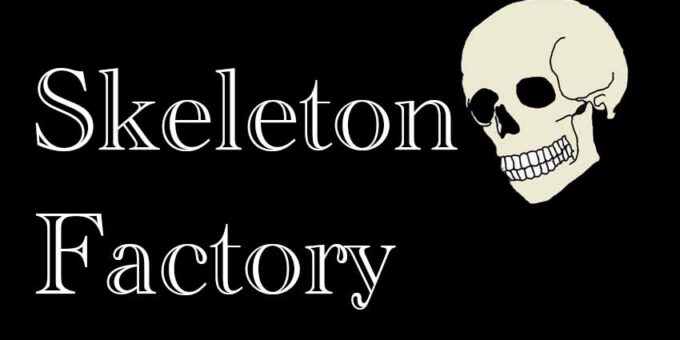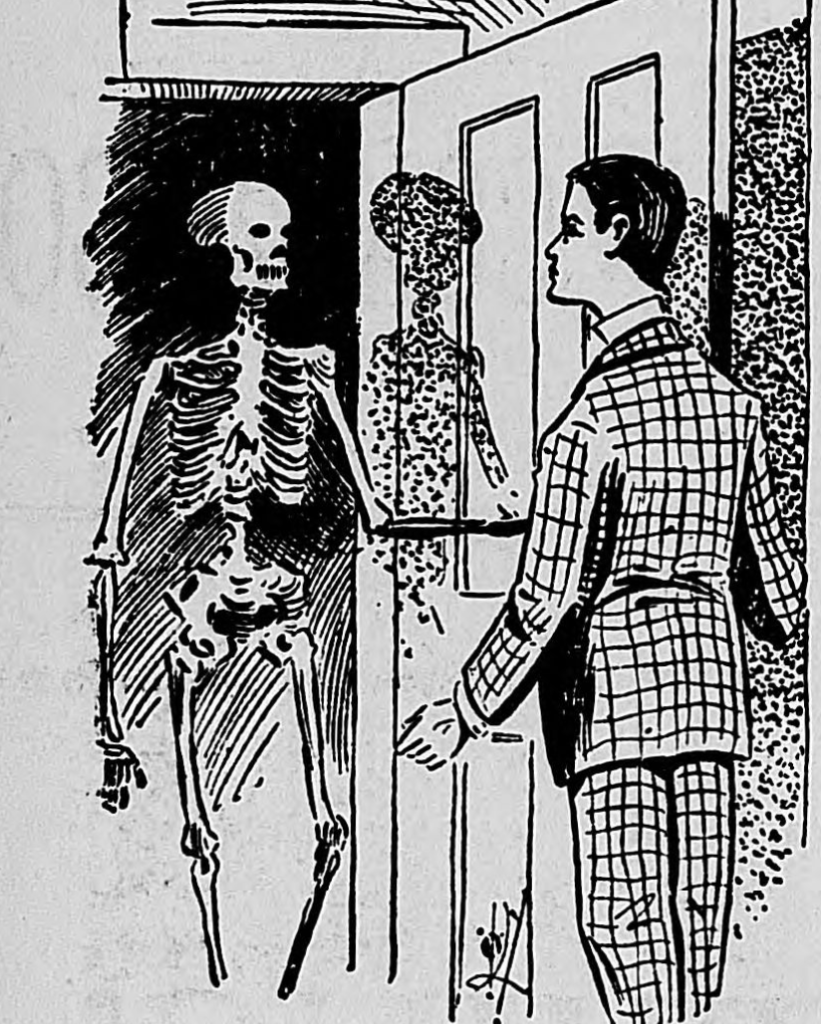
Skeleton factories found in metropolitan areas, such as Paris, London, and New York, had a healthy trade in human bones. This fascinated reporters back in the late 1800s and early 1900s, and many articles were written about this curious profession.
Factory Prepares Human Bones
Making skeletons for a living does not seem to be a business that would pay very much, and yet there are a number of places where skeletons are made. In making skeletons it does not mean that they are made artificially by some composition resembling bone, but that they are made by removing flesh and ligaments, drying the bones, whitening them and assembling them together with slender wires in place of the ligaments, which, of course, will not remain solid like bone, but disintegrate.
In these places skeletons of almost everything, from a common tadpole to a human being are made. There are places where artificial skeletons are made for various purposes, such as theatrical productions and the like, but this is done along with other work, where all sorts of things from imitation ivory paper cutters to massive pillars are made.
The real skeleton factory deals in nothing except the genuine skeletons and they not only sell these and fill orders for them to all sorts of medical men and institutions and schools, but they are also willing to “rent them” for any period.

The biggest share of the skeletons trade is carried on in France, the biggest factory being located in gay Paris where there is complete equipment and stock for furnishing skeletons of everything, even extinct animals, skeletons of fishes and men or elephants and rabbits and everything today that has enough of a skeleton to put together. So great is the business in this place that it has branches in London and Berlin and it gets out great catalogues and sends them broadcast, showing lists and cuts of their choice lots of skeletons.
Most of the human bones employed in the French manufacture belonged, in life, to criminals or to unknown persons whose bodies were unclaimed after death in hospitals or almshouses. After being utilized in the dissecting room the remains were removed to this factory.
The proprietor of this factory is, or should be, a very rich man, for he practically monopolizes this industry. The factory has many departments. First comes the preliminary preparation of the skeleton in the carbolic acid tank, and finally in fitting of the bones and joints together with wires.
The preparation of the skeleton takes many months from the first to last, and is a very expensive process in the bulk. There must be a thorough chemical treatment of the bones, in the first place, to insure their hanging together, and remaining in an unaltered state. It is hardly ever the case that a skeleton seen on exhibition is made up entirely of its own original parts.
The formula employed in bringing the process of the skeleton’s completion to a state of relative perfection is still an industrial secret. It must be, when sold, as white as marble. In the warehouse where skeletons of all forms and representative of all races, may be seen; some by accident or in virtue of dissection processes have been broken or dismounted and very carefully refitted with fine wire.
Underneath are multitudes of boxes full of assorted bones, with big bones, such as ribs, marked off with letters and numbers. In showcases may be seen for sale – or to be let for whatever purposes may be desired – skeletons of giants, dwarfs, or of strange races discovered by explorers in far off countries.
Criminals heads with their names and the dates of their execution (some of them very remote) are seen here, and pamphlets descriptive of their crimes are held for sale, with cards in small type containing the same matter to be attached if desired, to the skull or skeleton.
The preparation of skeletons is really far more important that one would think, as it provides thousands of medical students and others with the means of making a proper study of the construction of the human frame and helps in the constant work of medical and surgical advance. Skeletons of animals, of course, are valuable and are used in the study of zoology. And so, taken altogether, it is quite a legitimate and useful business.
Source: The chronicle news. (Trinidad, Colo.), 05 June 1913.

